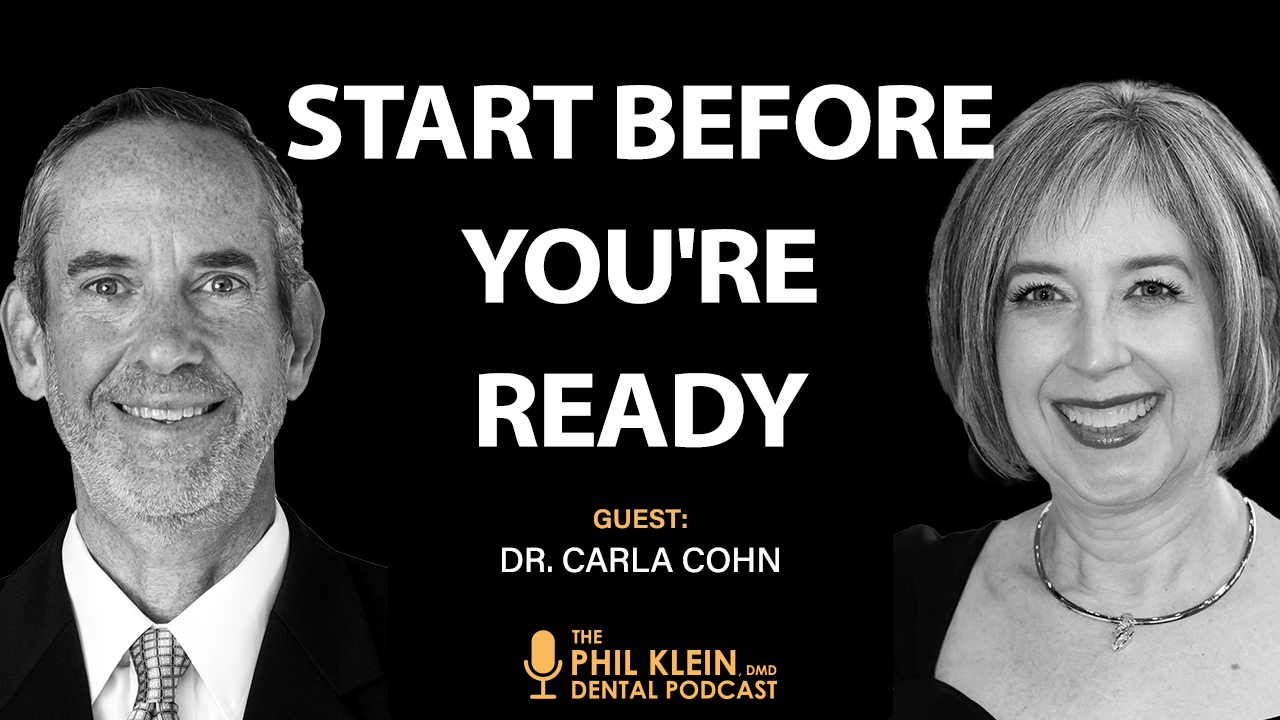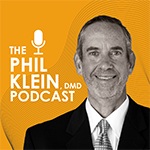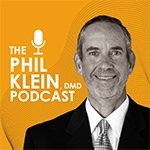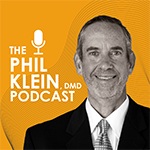For most general practitioners, direct composite restorations are a large part of everyday dental practice. Many clinicians have a “favorite material” or “favorite technique” that is universally applied to all clinical situations. Given the variety of patients and clinical issues that present, is important that the dentist “be the doctor” and prescribe the restorative material that is best for each clinical situation! This CE webinar will explore different approaches to the restoration of a Class II cavity preparation based on clinical parameters and discuss techniques and materials choices that will help to maximize results and restoration longevity.
When a clinician struggles with the laboratory or the fit of a final restoration, the answer can often be found at the prep appointment. The integrity of our final restoration is often related to the quality of the impression that we make at the preparation appointment. This CE webinar will provide you with some clinical tips that will help you insure that you have quality that is consistent and predictable.
In this CE webinar you’ll learn:
• Why anatomy-based treatment planning provides superior patient care
• The importance of patient education and the cost versus convenience discussion
• Differentiating your orthodontic practice utilizing 3D technology
• The role low dose 3D plays in orthodontic treatment and the benefits over 2D radiography
• Need-to-know techniques and best practices for digital treatment planning workflows
• And more
Thirty-two states have legalized marijuana for medical use. What is it? Does it have any medicinal use? Is marijuana addicting? Does marijuana produce any oral signs or symptoms? Are there drug interactions between marijuana and dental drugs? What are “shatter”, “wax”, “dab” or “scat” and how do they differ? This CE webinar will discuss some of the concerns about marijuana use/abuse, and its bearing on dental treatment.
How many new patients are lost every month because your business employees are handling new patient calls as routine inquiries rather than potential sales opportunities? If ever there were a perfect occasion to sell the practice and the services offered, it’s when the prospective new patient calls your office. They are interested, ready, and willing to learn more. Learn how to prevent practice growth from tripping over your frontline.
This CE webinar will the allow the attendee to:
• Understand the disruptive forces around us
• Gain an overview of generational differences that impact health care decisions
• Be exposed to new advances in materials and technology in that will positively impact dentistry
At the end of this CE webinar, you will be able to identify the cause and effect of restorative crown and bridge failures, as well as understand the chemical and mechanical properties of different cements and restorative materials. You will be able to determine key characteristics, advantages, disadvantages, and clinical applications of cementation materials. You will be better prepared to make effective decisions regarding the application and longevity of your patients' restorations. Knowledge is power!
Learning Objectives:
• Review and discuss common rules with clear aligner treatments
• Explore different aspects of practice workflow to consider when implementing a new treatment
• Discuss motivating factors to implement a new treatment into your practice workflow
• Learn how to navigate design and set-up
A properly placed post and core in the correct clinical situation is integral to the long-term success of the tooth and subsequently placed indirect restoration. In this CE webinar, we will review post & core systems and placement techniques that will ensure predictable outcomes, giving you yet another tool to help your patients get the 5-star dentistry they deserve.
This CE webinar will cover the following:
• A review of the current research and guidelines in biofilm focus care for disease prevention
• Provide an understanding of what tools, technology, and products to use for natural teeth / implant restoration patients.
• New biofilm focus care protocols for prophylaxis and home-care recommendations
This CE webinar will cover clinical case selection, treatment and prognosis, through the understanding of proper diagnosis, materials and biological considerations, when performing vital pulp cryotherapy treatment.
Upon completion of this webinar, the dental professional will be able to:
• Review & evaluate their current instrument set-up used for examination and periodontal debridement.
• Identify the best instruments to effectively root plane, detoxify and polish both natural teeth and implant sites.
• Recognize the implication of screening probes in the process of care.
• Plan the proper application and timing in using both power-driven and hand instruments.
• Revisit the concept of “selective” vs “conventional” coronal polishing and what the evidence tells us today
• Improve their ergonomic comfort with innovations in cordless handpieces.
Upon completion of this CE webinar participants will:
• Learn how to visualize patient anatomy with CBCT scan imaging modalities;
• Understand certain parameters needed to recognize potential implant receptor sites
• Learn how to plan for screw-retained or cementable restorations
• Understand how to plan for bone grafting or bone reduction to enhance treatment outcomes
In this CE webinar, follow Dr. Flax as he takes you on journey with a very challenging patient to make him look good and feel great, while giving the patient hope for future dental solutions.
Glass ionomers have a proven track record of clinical success, yet some clinicians are hesitant to fully embrace them in practice. The chemistry and applications continue to improve, and a handful of dentists keep pushing the boundaries of what is possible using this gold-standard bioactive material. Whether you’re new to the fascinating world of glass ionomers or think you have heard it all before, this CE webinar will summarize the science and clinical applications of a dental material that belongs in every office.
This CE webinar will describe situations where the use of a chlorhexidine varnish can be used to idealize tissue health, reduce caries risk and minimize sensitivity. In addition, proper maintenance of restorations is essential for their long-term health, stability and aesthetics. Unfortunately, some materials used for maintenance can damage or reduce the lifespan of restorations. This CE webinar will describe tips and recommendations for maintenance of your direct, indirect, CAD/CAM and implant supported restorations.
The learning objectives for this CE webinar are:
• Understanding the present condition of patients oral health in providing comprehensive dental care
• Utilizing malocclusion concepts of risks helping patients choose between treatment alternatives
• Identifying the value of direct restorations and integrating a digital workflow in the process of case acceptance
Radiographs and explorers have been used for many years to aid in the diagnostics of caries; however, we know that new methodologies do exist that can help us to achieve an enhanced level of diagnostics in respect to certain types of decay. This CE webinar will take a detailed look at the world of near-infrared transillumination and how a simple handheld technology can be utilized on pediatric through adult patients to diagnose the presence and specific location of caries and fractures—even in their earliest stages.
Dental caries continues to be a top-of-mind dental concern, affecting a majority of the US population. Fluoride is a mainstay in prevention, with fluoride varnish products becoming the primary type provided in dental practices. Dental professionals often get “side-tracked” with concerns over patient acceptance of a product utilized in patient care, rather than its efficacy, and often is the case when selecting a fluoride varnish. This CE webinar offers an overview of factors to consider when selecting a fluoride varnish product. Flavor aspects will be presented with a conversation about taste as the current primary determinant for product choice. The benefits of additional ingredients in fluoride varnish will be discussed as well as other characteristics for superior patient benefit. The entire dental team can profit from information concerning fluoride varnish choices for best patient care.
The purpose of this CE webinar is to provide evidence for the routine use of surgical guides for implant placement and to illustrate the advantages of having those cases be fully restoratively driven. We will discuss a comprehensive strategy to implement this into practice using currently available tools, with an emphasis on speed and efficiency, leading to the possibility of same-appointment planning and surgery. Review of the process will be done step-by-step. By implementing these techniques, the advantages are experienced by the clinician and patient, resulting in predictable, high-quality implant clinical and restorative outcomes.
It’s more than screening for oral abnormalities and providing dental care to patients diagnosed with oral cancer. Cancer of any type affects most of us, if not personally, then a friend, family member, or patient that visits your office. This CE webinar covers oral concerns of oncology patients and their caregivers, products to aid in treatment of those oral concerns, and how the cancer diagnosis affects treatment considerations in your chair.
In this CE webinar, we will cover the following:
• How to achieve an accurate bite registration
• Accuracy in implant impressions
• Registration of a CR bite
• Creative immediate implant stabilization and temporization
• Taking a quad-tray impression the easy way!
Are revenues starting to level out compared to bank deposits last year? You may not know exactly where the shortcomings are, but making an effort to find out is the first step. Learn where the most common revenue opportunities can be found and increase your income starting today!
In this CE webinar, join us as we give a concise recipe to simplify everyday crown and bridge. From preparations, to cementation, and everything in between we will offer solutions to conquer every day difficulties.
Laboratory materials are changing faster than ever. Have you asked you laboratory recently what type of Zirconia or Lithium Disilicate they are using? In this CE webinar, join us as we learn how to ask of your laboratory the proper questions so you will know how to handle each of these materials appropriately. By the conclusion of the webinar, the attendee will have a clear, concise recipe of how to select the proper indirect materials and how to optimally cement them for long term success.
The presentation of lesions in the oral cavity can often be a diagnostic dilemma for the dental team. This CE webinar will review the common intra-oral lesions that are found with a focus on appropriate diagnosis and management. Specific protocols for management and care will be presented so that the dentist can feel comfortable that concerning cases are treated/referred and benign lesions can be continued to be observed. This CE webinar is appropriate for the dentist and clinical team including assistants and hygienists.
During this CE webinar, we will
• recognize the importance of early preventive care
• discuss the common causes of dental disease
• describe the behaviors of biofilms that influence the treatment goals of disruption, elimination, or control
• explain the principles of selective polishing utilizing disposable prophy angles and paste
• discuss the different methods for controlling plaque
Dental Labs often report that a significant percentage of impression they receive are missing some critical information or detail. Dental impressions can be one of the most difficult portions of the crown and bridge procedure. This CE webinar will discuss some simple techniques that can improve all clinician's performance immediately. The CE webinar will also examine the benefits to using a new VPS material that has been engineered to optimize both working time and improve setting time.
This CE webinar is designed to acquaint the audience with biomimicry and bioactivity in dental materials, in addition to how and when they should be used in the treatment of tooth decay, as well as in other aspects of dental treatment.




















































